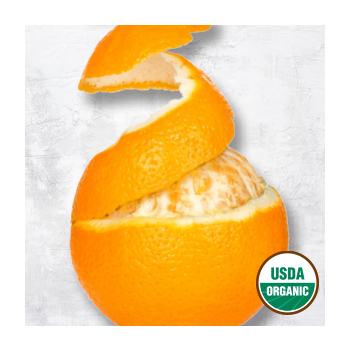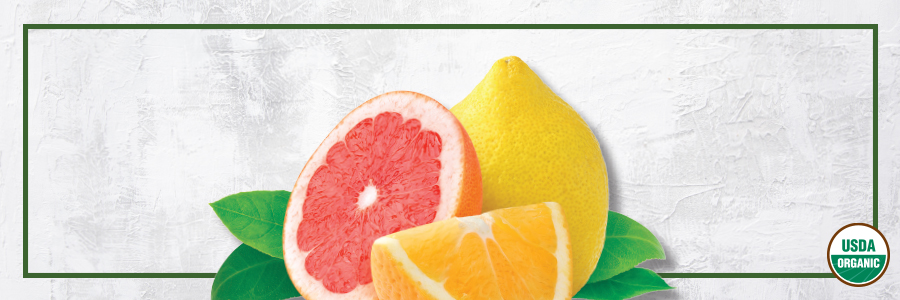


Sign-up for {N}power to get exclusive discounts, newsletters, members-only features, and more!

As the winds turn colder and darkness settles in a little earlier each evening, this time of year can feel a little dreary. On gloomy late-fall days, you might need a little pick-me-up to bring a little pep to your step. Thankfully it’s citrus fruit season—nature’s way of bringing us a little zest and a healthy dose of vitamin C, all wrapped in vibrant colours to get us through the dark winter months. A zing of grapefruit, tangy mandarin, a juicy blood orange, or a slice of lemon to brighten up your tea… thank you, nature!

OJ with a splash of fungicides?! We’d rather not. Conventionally grown citrus is notoriously coated in residues, finding their way into juices, and even citrus-flavoured sodas.1 Environmental Working Group (EWG) tests found 90 percent of non-organic citrus samples contained two hormone-disrupting fungicides in particular: imazalil and thiabendazole.2 These fungicides leave residues that cannot be removed by simply peeling the fruit because both are systemic, meaning imazalil and thiabendazole make their way into the body of the plant and fruit itself. Yikes!3 They pose serious risks to human health, including harm to immunity and thyroid functioning, and both have been labeled likely carcinogenic by the Environmental Protection Agency (EPA).4 The EWG tests found imazalil levels 20 times above the recommended EPA limit for children.5 Organic citrus fruits tested, on the other hand, did not have any detectable traces of these nasty fungicides.
For years chlorpyrifos use has been in question, banned and unbanned at the federal level. Several states have banned this pesticide, including California, Hawai’i, Oregon, and New York. The fact of the matter is that there are no safe uses of this organophosphate, which was first developed for chemical warfare toward the end of WWII.6 With its origins as a nerve agent chemical weapon, it’s no surprise that chlorpyrifos is classified by the EPA as a possible carcinogen.7 Once it enters the body, chlorpyrifos “binds permanently to enzymes which control the messages that travel between nerve cells” causing nerve damage, endocrine disruption, and issues with growth and development.8 In 2024, the decision to completely ban chlorpyrifos was amended to allow its use on 11 crops where states still allow it, including, you guessed it, citrus fruits.9 10 The best thing you can do to protect yourself, your family, your communities, and the environment from chlorpyrifos is to choose organic citrus fruits.

One issue with pesticides, on top of the health and environmental harm they cause, is the fact they also endanger non-targeted species, including ones that play important roles in soil and plant health. Chlorpyrifos for instance, prevents nitrogen mineralization—the process in which soil-dwelling microorganisms like bacteria and fungi break down organic matter into absorbable nutrients for the crops.11 More nutrient-filled soils mean more nutrient-dense crops, and organic citrus farming methods offer just that. Citrus groves have proven to be perfect places for cover cropping. Not only do cover crops increase nutrients in the soil, but they also make a significant difference to water conservation. Fifth-generation California citrus farmer Chris Sayer says cover crops have meant, “On our 50 acres, it equates to about 2.5 million gallons of water we retain for crop use after the rainy season ends.”12 Incredible! Organic farming methods like cover cropping lead to more resilient farms in the face of the extreme weather climate change brings. Buying organic citrus fruits supports farmers in making choices that protect our environment.

Candied oranges sit atop this delectably light tea cake inspired by Italian polenta cake. Rather than the finely ground polenta that is traditionally used in Italy, we sub cornmeal, which is similar in texture and more widely available in the States. Our version is also gluten free and refined sugar free, making a lightly sweetened tea cake that is better for you. If you prefer a little more sweetness, simply add the syrup in step seven.



Sign-up for {N}power to get exclusive discounts, newsletters, members-only features, and more!